
Ah, Oregon, where the lush landscapes and vibrant greenery often come hand in hand with some unwelcome guests. You guessed it — we’re talking about those common weeds in Oregon. These obnoxious, noxious weeds seem to multiply faster than you can say “Willamette Valley.”
If you’re a homeowner in the Beaver State, tirelessly battling these persistent invaders, you’re in good company. So prepare to dig in, quite literally, as we embark on a journey to equip you with the knowledge and tactics to outsmart those pesky green interlopers and restore peace to your yard.
Perennial Weeds
Dandelion
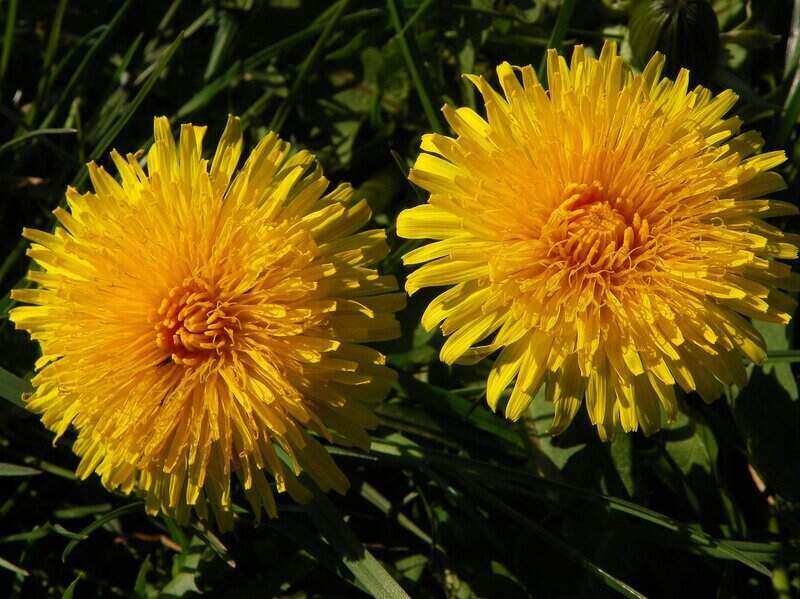
Dandelions, those familiar yellow-flowered plants with fluffy white seed heads, are widespread throughout the United States, including Oregon. While they are not considered noxious weeds that harm the environment, they can be a nuisance, especially in lawns.
Their ability to spread quickly through wind-dispersed seeds and deep taproots make them persistent invaders in our well-kept outdoor spaces. However, they also hold unexpected health benefits, such as cholesterol control, diuretic properties, and antioxidant potential.
Life cycle: Perennial
Weed type: Broadleaf
Where it thrives: Full sun and moist soils
How to identify dandelions:
- Leaves form a basal rosette, with each lobe resembling a lion’s tooth.
- Flowers consist of multiple small yellow florets clustered together to form a single flower head.
- After the flowers fade, they develop seed heads that resemble fluffy white balls.
- They form a long and thick taproot that extends deep into the soil.
How to get rid of dandelions: To successfully eliminate dandelions and prevent their regrowth, targeting their taproot is crucial. Here are some methods you can use to get rid of dandelions:
- Hand-pull them
- Weeding, mulching, and mowing
- Boiling water
- Broadleaf herbicides (pre-emergent or post-emergent)
Remember, when using herbicides, always follow label instructions and wear appropriate protective gear.
English Ivy
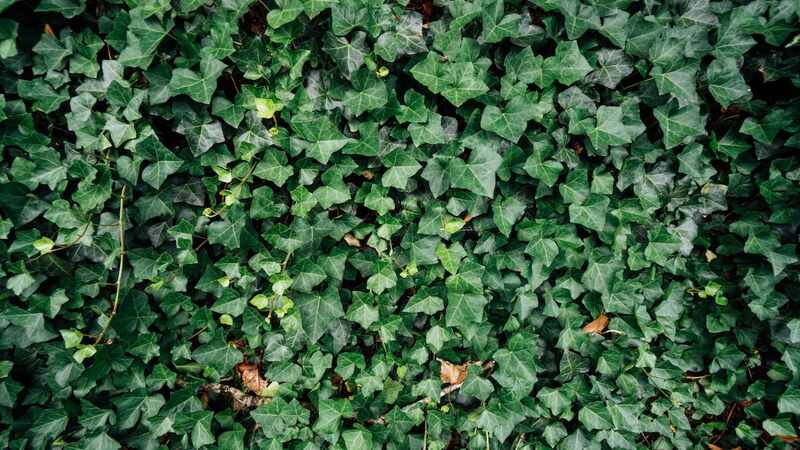
English ivy is a vine with trailing stems and glossy leaves with a shiny, waxy coating. While it may look cute as a houseplant, English ivy has a not-so-pleasant side. It releases chemicals from its roots that slow down the growth of other plants nearby. This means it’s not a good choice for your garden beds if you want a healthy and diverse plant community.
If you’re located west of the Cascades, you’re more likely to come across this weed.
Life cycle: Perennial
Weed type: Vine, Class B noxious weed
Where it thrives: It grows in a variety of soil types but does not like wet areas. Tolerates full shade.
How to identify English ivy:
- Dark green leaves with three to five lobes
- Leaves with a waxy coating
- Long, flexible stems that can grow up to 90 feet
- Small green or white flowers in fall
- Dark blue to black fruits
How to get rid of English ivy: Manual removal is a viable option to effectively remove English ivy, especially when the soil is moist. Carefully pull the vines from the ground, ensuring you remove as much of the root system as possible, and dispose of them away from the site to prevent re-rooting. In cases of extensive infestation, glyphosate can be used, following the manufacturer’s instructions.
If the weed has climbed up a tree, you don’t have to climb to remove it. Instead, cut it at your chest height all around the tree and gently peel the vine off.
Himalayan Blackberry
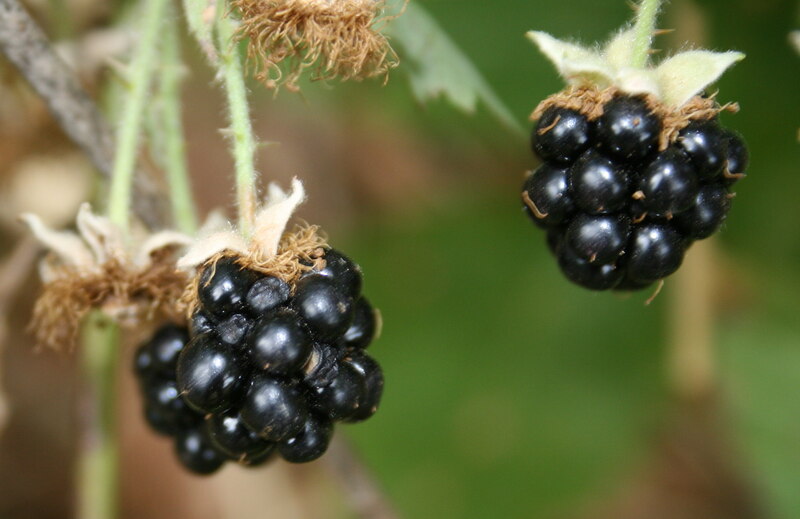
The Himalayan blackberry is a tough plant that causes problems in many areas. It’s a shrub with thick, bending stems with big thorns, making it hard to handle. It produces small white to pink flower clusters that turn into green berries. As summer progresses, these berries change from red to black.
However, don’t be fooled by its appearance — this plant is invasive and spreads aggressively, taking over yards and natural spaces. It is prevalent in the Willamette Valley.
Life cycle: Perennial
Weed type: Broadleaf, Class B noxious weed
Where it thrives: Full sun, with loamy, nutrient-rich soils
How to identify Himalayan blackberry:
- Clusters of small white or pink flowers
- Leaflets arranged in a palmate pattern
- Oval-shaped leaves with serrated or toothed edges
- Thick, woody, arching stems with thorns
How to get rid of Himalayan blackberry: Cut back the plant stems, leaving about a foot to track the plant, and then carefully pull back the cut stems with a rake or suitable tool, allowing space for digging up the roots. Herbicides containing glyphosate can also be used.
Spotted Knapweed
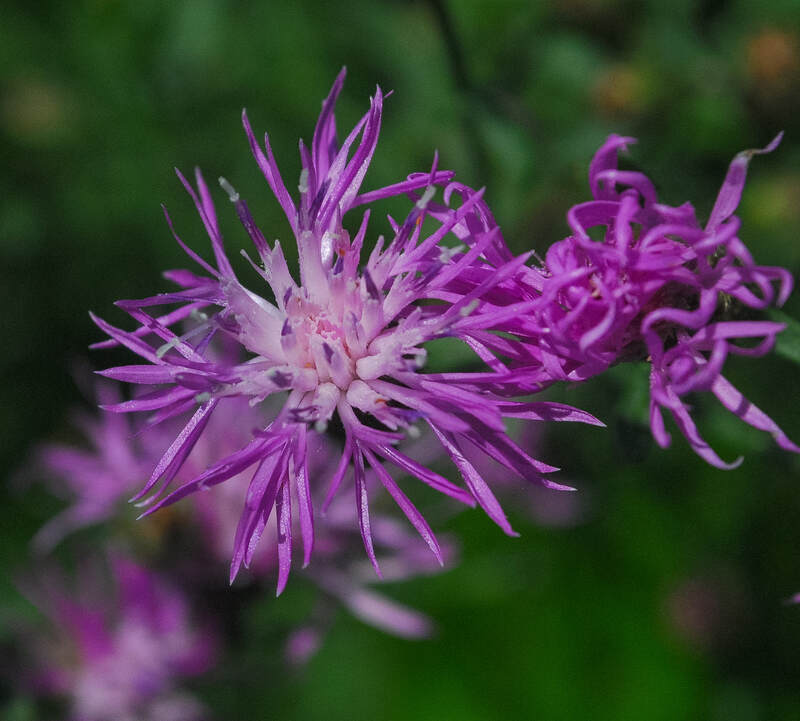
Spotted knapweed is a weed that occurs predominantly in central Oregon. This invasive plant can reach heights of up to 3 feet and is characterized by its distinctive purple or sometimes cream-colored flowers. Black bracts form a unique pattern at the tip of each flower head.
One of the significant concerns with spotted knapweed is its ability to cause economic losses and disrupt natural areas. This aggressive invader outcompetes and excludes forage species, reducing the availability of food sources for livestock and wildlife. It also displaces native plant species, leading to a decline in biodiversity.
Life cycle: Short-lived perennial
Weed type: Broadleaf, Class B noxious weed
Where it thrives: Full sun, and dry, sterile soils
How to identify spotted knapweed:
- Multiple stems arise from its crown
- Purple or cream flowers, with the bracts being black
- Pale to gray-green leaves, with a rough surface
How to get rid of spotted knapweed: Hand-pulling is most effective when the soils are moist, typically from May to June, when the plants have bolted but have not yet flowered. It is important to remove the entire taproot, as broken roots can lead to re-sprouting (you may need to dig).
Selective broadleaf herbicides containing active ingredients such as 2,4-D or a combination of dicamba and 2,4-D can be used for more extensive infestations. These herbicides should be applied according to label instructions and specific regional regulations.
Knotweed
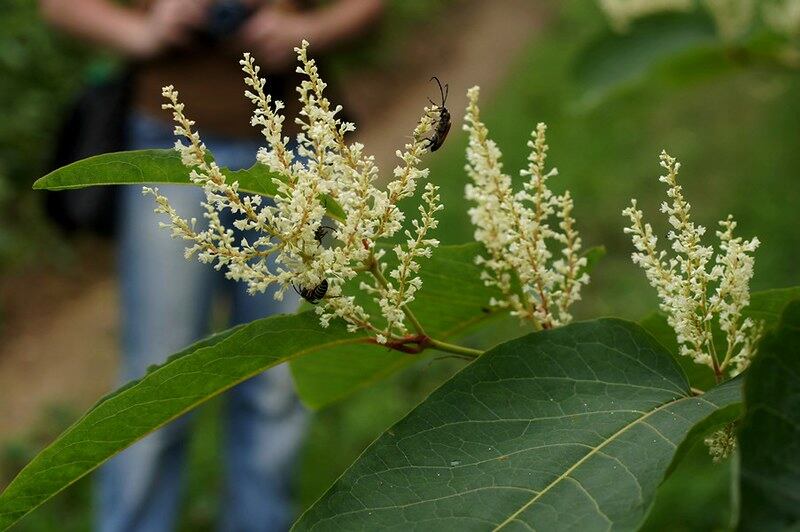
Knotweed is a prevalent invasive species found in Oregon’s coastal and eastern regions. Among the various types of knotweed, the giant knotweed stands out with its remarkable height, reaching up to 11 feet tall.
This formidable plant features bamboo-like canes and branched clusters of small white flowers, adding to its distinctive appearance. However, the allure ends there, as knotweed species are notorious for clogging waterways, eroding banks, and penetrating building foundations.
There are four common knotweed species in the Pacific Northwest: Japanese knotweed, giant knotweed, hybrid knotweed, and Himalayan knotweed.
Life cycle: Perennial
Weed type: Shrub, Class B noxious weed
Where it thrives: Prefers full sun and riparian areas like stream banks
How to identify knotweed:
- The giant knotweed has elongated, heart-shaped leaves.
- The Japanese knotweed has smaller oval-shaped leaves.
- The Himalayan knotweed features long and narrow leaves.
- They all feature small creamy white clusters of flowers.
How to get rid of knotweed: Relying solely on mechanical methods is not enough for dealing with knotweed. The key to successful eradication is addressing its extensive underground system of rhizomes. Consider combining mechanical and chemical control methods (imazapyr is commonly used) for effective results.
Toadflax
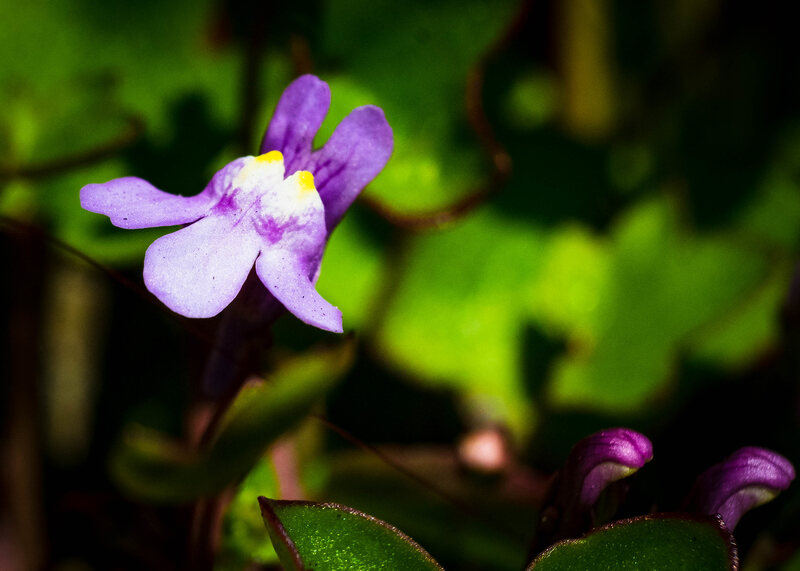
Yellow toadflax (Linaria vulgaris), commonly known as “butter and eggs,” is a plant with vibrant yellow flowers. While many may be tempted to include it in their flower gardens, caution is warranted, as yellow toadflax spreads aggressively. This invasive species competes with other plants and is moderately poisonous to livestock.
Like yellow toadflax, the Dalmatian toadflax (Linaria dalmatica) shares its invasive characteristics. However, it stands apart as a larger and more robust plant with a different type of leaf structure.
Life cycle: Perennial
Weed type: Prairie weed, Class B noxious weed
Where it thrives: Full sun, dry grassland, sandy soils
How to identify toadflax:
- Yellow flowers with orange throats, resembling snapdragons
- Bad smell
- Yellow toadflax has lance-shaped, pointed, gray-green leaves
- Dalmatian toadflax has heart-shaped or egg-shaped leaves
How to get rid of toadflax: Getting rid of toadflax can be challenging due to its ability to regenerate from small root fragments. A combination of mechanical and chemical methods is often necessary to ensure successful control. Begin by employing mechanical control measures. Dig out the entire plant, including the root system, and then consider applying an herbicide containing glyphosate.
Spurge Laurel
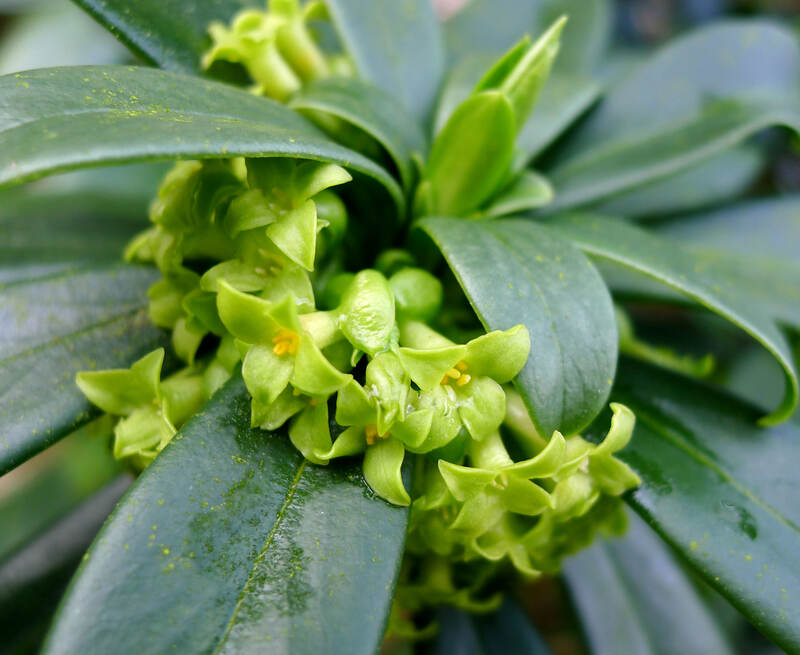
Spurge laurel is an evergreen shrub that looks quite attractive. Its long, dark green and shiny leaves are characteristic, but you should be careful around it. Its leaves, bark, and berries contain toxins that can be harmful, so handling this plant with care is essential.
When allowed to thrive, spurge laurel blocks sunlight, competes aggressively with native plants for resources, and alters soil chemistry. This weed grows in isolated clumps or can form extensive monotypic stands.
Life cycle: Perennial
Weed type: Shrub, Class B noxious weed
Where it thrives: Full to partial shade, and well-drained soils
How to identify spurge laurel:
- Spurge laurel has long oblong leaves spirally arranged.
- It has honey-scented yellow-green clusters of flowers that grow between the leaves.
- It has green, egg-shaped fruits that turn black when they ripen.
How to get rid of spurge laurel: For small infestations, carefully hand dig the entire plant, including the roots, taking caution due to its toxic nature, and dispose of it in plastic bags (avoid composting). After cutting the plant near the ground, you can also apply an herbicide containing triclopyr to the stump.
Hoary Cress Whitetop
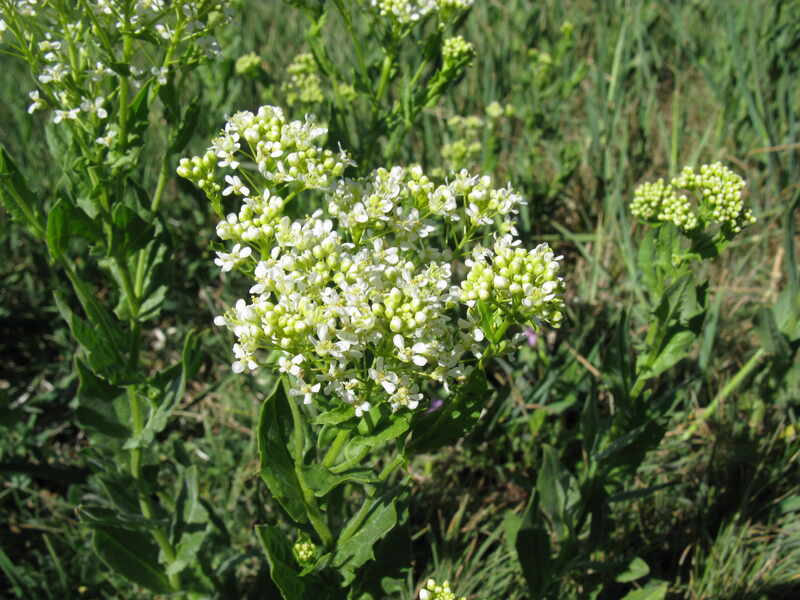
Hoary cress whitetop is a pervasive weed widely distributed in Oregon, particularly east of the Cascades. This invasive plant is characterized by its deeply tap-rooted nature, which allows it to thrive in various soil conditions.
The leaves of the hoary cress whitetop are blue-green and covered with fine hairs, and small white flowers further contribute to its visual characteristics. One of the major concerns with hoary cress whitetop is its ability to dominate and restrict the growth of other plant species.
Life cycle: Perennial
Weed type: Broadleaf, Class B noxious weed
Where it thrives: Full sun, alkaline soils
How to identify whitetop:
- Leaves are lance-shaped and are alternately arranged on the stem
- Flat-topped clusters of white flowers, each with 4 petals
- Seed pods are inflated and rounded
- 1 – 2 feet tall
How to get rid of whitetop: For small, isolated populations, hand pulling is effective, ensuring the entire root system is removed to prevent regrowth from any fragments left behind. In cases of larger infestations, herbicides containing 2,4D (ester or amine4), imazapyr, or imazapic can be applied, following label instructions and regional regulations.
Canada Thistle
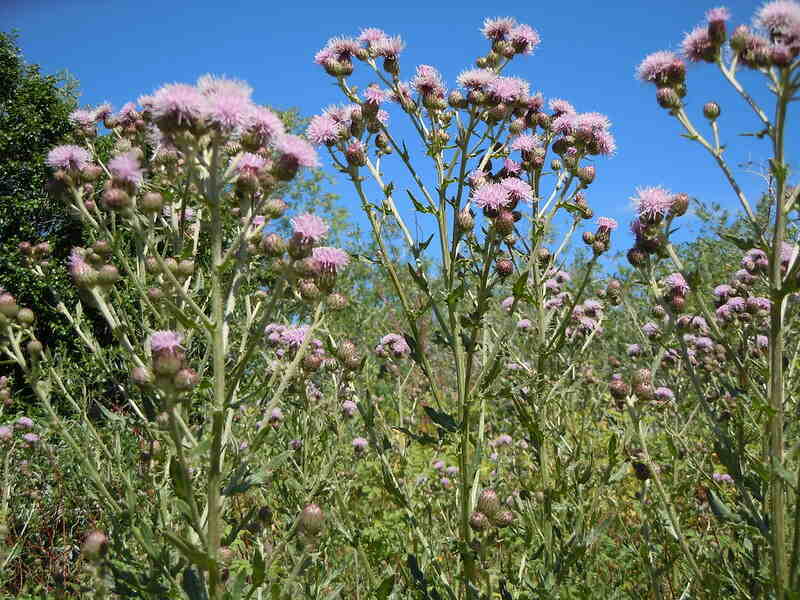
The Canada thistle (Cirsium arvense) is a troublesome weed known for its invasive nature. This perennial plant spreads through rhizomes, making it difficult to control. One of its distinctive features is the wavy-edged leaves, which are covered with yellowish prickles along the leaf edges.
Canada thistle produces small violet flowers that grow in clusters, adding a touch of color to its invasiveness. In addition, this weed outcompetes native vegetation, displacing important species and altering natural ecosystems.
Life cycle: Perennial
Weed type: Broadleaf, Class B noxious weed
Where it thrives: Full sun, and moist soils
How to identify Canada thistle:
- 2 – 5 feet tall
- Lance-shaped leaves, with wavy edges and yellowish prickles
- Teardrop-shaped pink and purple flowers
- Seedlings emerge as small rosettes in fall or early spring, with fluffy tops
How to get rid of Canada thistle: Prevention is crucial, such as using pre-emergent herbicides in spring and repeatedly mowing or cutting stands before flowering. Avoid tiling to prevent the spread of the plant’s rhizomes. For larger infestations, targeted herbicide application is recommended, with herbicides containing aminopyralid, dicamba, or glyphosate commonly used.
Giant Hogweed
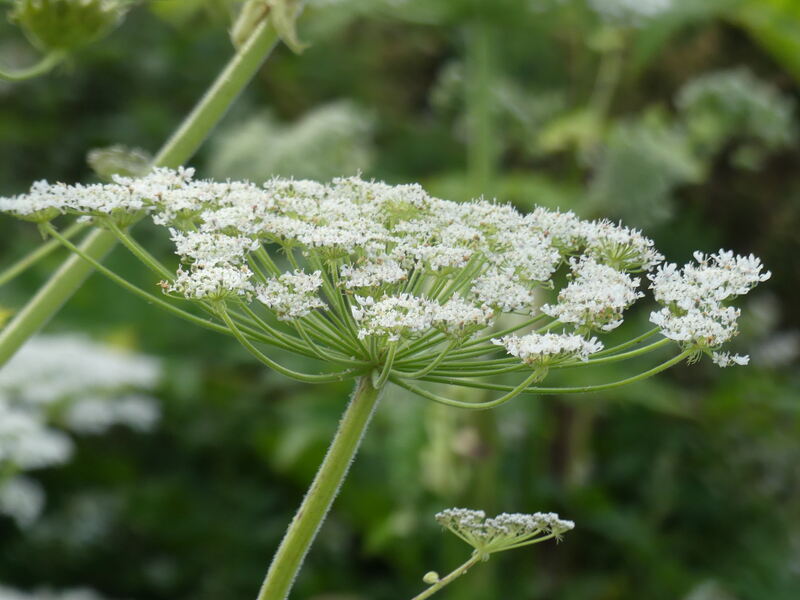
The giant hogweed is commonly found in northwestern Oregon and can grow to towering heights of 10 to 15 feet. However, this impressive size should not overshadow its potential dangers. When skin comes into contact with the plant’s sap and is exposed to sunlight, it can cause severe burns, blisters, and even permanent scarring.
The giant hogweed poses additional challenges as a garden pest. Its rapid growth and aggressive nature can quickly overrun flower beds and other cultivated areas.
Life cycle: Short-lived perennial
Weed type: Herb, Class A noxious weed
Where it thrives: Partial shade, and nutrient-rich, moist soils
How to identify giant hogweed:
- Leaves grow three to five feet wide, are incised and deeply lobed
- Looks like the native cow parsnip, but larger
- Clusters of white flowers shaped into an umbrella
- Stems have purple splotches and coarse white hairs
How to get rid of giant hogweed: Due to its harmful nature, caution should be exercised to avoid direct contact — wear gloves and protective clothing. For seedlings and young plants, carefully dig them up. Cut back the plant using loppers or similar tools for larger plants and then dig up the entire plant, including the root crown.
Purple Loosestrife
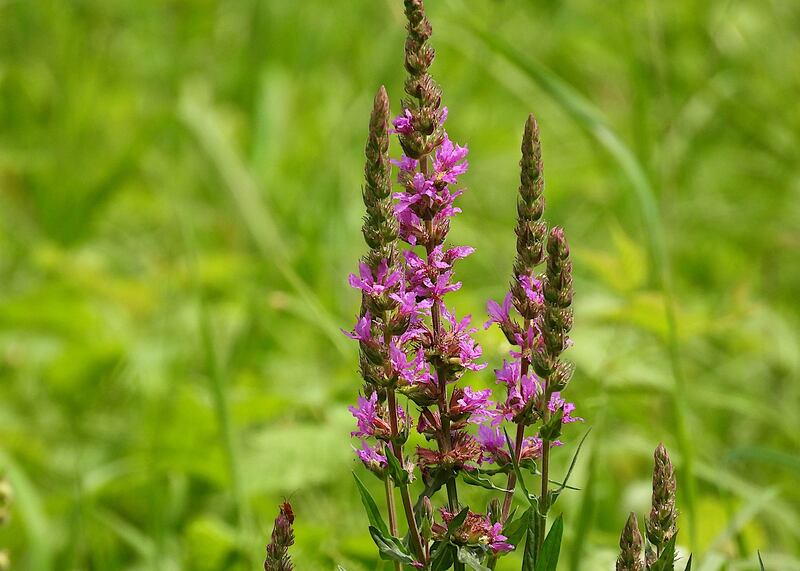
Purple loosestrife (Lythrum salicaria) is commonly found in wetlands, marshes, and areas near bodies of water. This invasive plant displays eye-catching rose-purple to magenta flower spikes, with each flower consisting of six petals.
One of the significant concerns with purple loosestrife is its ability to crowd out native species and dominate a site. It grows vigorously, forming dense stands that outcompete and suppress the growth of native plants.
Life cycle: Perennial
Weed type: Broadleaf, Class B noxious weed
Where it thrives: Full sun, freshwater marshes
How to identify purple loosestrife:
- Tall, narrow spikes of purple-magenta flowers
- Grows 6 – 10 feet tall
- Leaves are opposite or whorled, lance-shaped, and stalkless
- Seeds have the size of ground pepper grains, and travel by water and birds
How to get rid of purple loosestrife: The most suitable method depends on the extent of the infestation. In areas where there are few young plants, manual removal is recommended. Carefully dig out the plants, removing as much of the root system as possible to prevent regrowth. If the weed is located in an aquatic site and you plan on applying herbicides, ensure you’re getting aquatic formulations of glyphosate.
Biennial Weeds
Bull Thistle
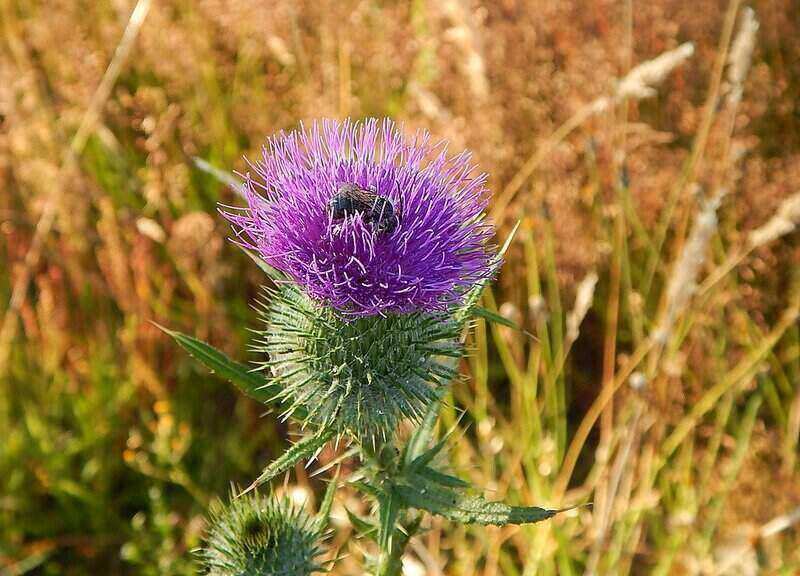
The bull thistle (Cirsium vulgare) is a widespread weed in Oregon, distinguished by its biennial nature. This invasive plant features branches with greenish-brown spines and hairs, and purple flowers. It competes vigorously with grasses and other Oregon native plants.
Fortunately, when compared to Canada thistle, the bull thistle is relatively easy to control through mechanical means.
Life cycle: Biennial
Weed type: Broadleaf, Class B noxious weed
Where it thrives: Full sun to partial shade, and prefers nitrogen-rich soils
How to identify bull thistle:
- Branches with green or brown spines
- Leaves are hairy and prickly on the upper side, and cottony underneath
- Dark pink to purple flowers in large heads
- Flower bracts have spines as well
How to get rid of bull thistle: Hand pulling is effective, especially for young plants before they produce seeds. Tilling the soil can help reduce the number of plants (just make sure you’re not dealing with Canada thistle instead). In cases of larger infestations or when manual removal is impractical, herbicides containing aminopyralid, 2,4-D, or dicamba can be applied selectively to target bull thistle.
Garlic Mustard
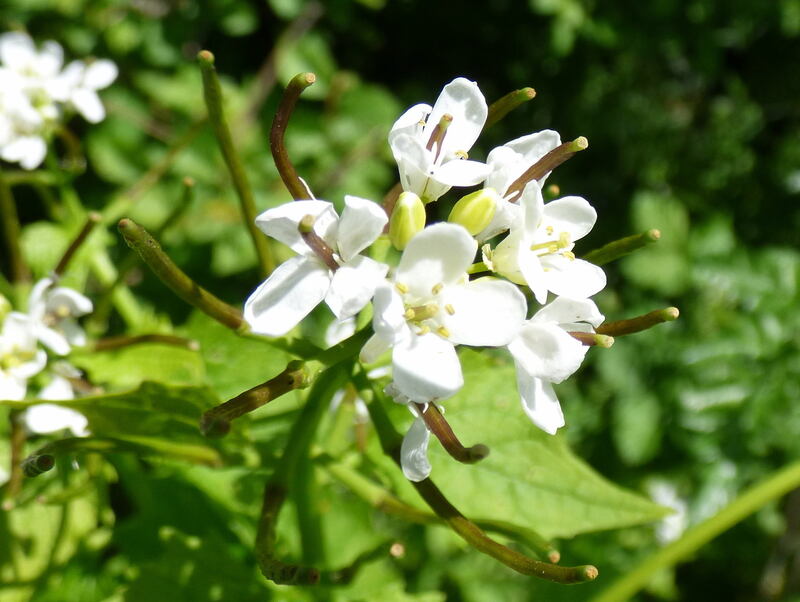
Garlic mustard weed is a prevalent invasive plant in the north Willamette Valley. This aggressive weed poses a significant threat to the local ecosystem. One of its distinct characteristics is its ability to exude chemicals from its roots that inhibit the growth of other plants, which negatively impacts the diversity and abundance of native plant species.
Another concerning trait of garlic mustard weed is its prolific seed production. A single plant can produce up to 5,000 seeds, enabling it to reproduce rapidly and spread vigorously.
Life cycle: Biennial
Weed type: Broadleaf, Class B noxious weed
Where it thrives: Partial to full shade, and well-drained, nutrient rich soils
How to identify garlic mustard:
- Leaves have a garlic odor when crushed
- Leaves are triangular to heart-shaped, with scalloped edges
- Small white flowers with four petals that form a cross appear in clusters in early spring
How to get rid of garlic mustard: Target the plants during the flowering stage before they produce seeds. Grasp them at the base to remove the entire root system. Bag and properly dispose of the pulled plants to prevent further spread, and revisit the sites to address any re-sprouting plants that may arise. Herbicides containing glyphosate or triclopyr can also be used.
Annual Weeds
Black Medic
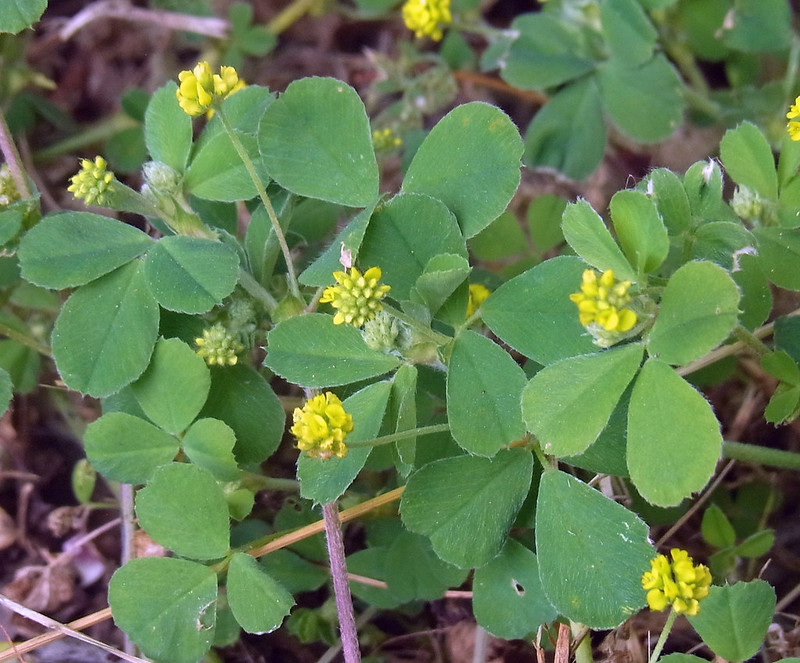
Black medic weed is often called yellow clover because it resembles clover with its three-leaf arrangement but has a yellow flower instead. When its seed pods turn black, it’s a sign that they’re about to drop and spread more seeds.
Taking preventive measures is crucial to keep this weed in check. You can maintain a healthy lawn by adopting practices like mowing at a higher height, regular fertilization, proper watering, and periodic aeration. These steps create unfavorable conditions for black medic weed to thrive.
Life cycle: Summer annual, but it can survive in mild winters
Weed type: Broadleaf
Where it thrives: Full to partial sun, and clay-loam soils, compacted soils
How to identify black medic:
- Oval-shaped leaves with three leaflets
- Small and clustered together yellow flowers
- Low-growing, crawling weed
- Small and black seed pods
How to get rid of black medic: To prevent further spread, removing black medic’s seed pods when they turn black is crucial. Consider using post-emergent herbicides containing dicamba, MCPP, and/or fluroxypyr.
Puncturevine
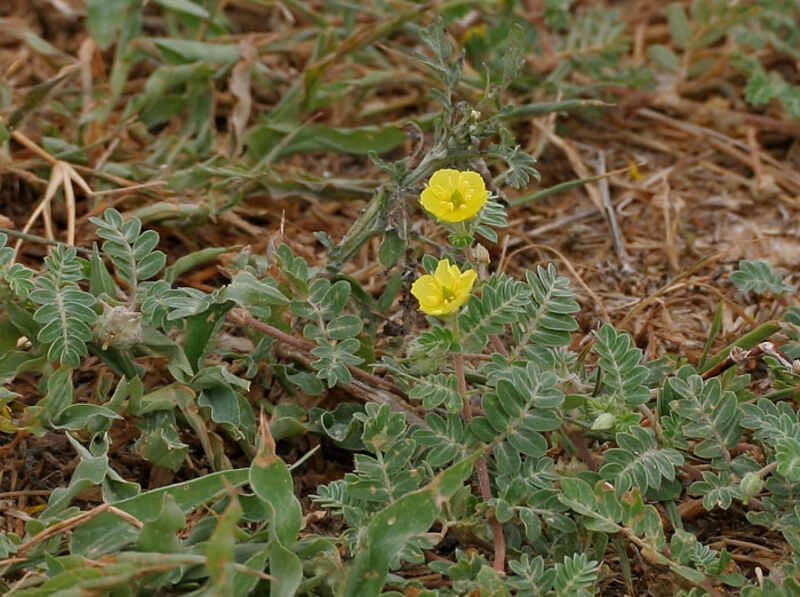
Puncturevine is a troublesome weed widespread in Oregon’s eastern, southeastern, and central regions. This plant has a prostrate growth habit, spreading close to the ground and forming dense mats.
Moreover, this plant has spined seeds, which are extremely painful to step on and can even puncture bicycle tires. This trait earned puncturevine its fitting name and makes it a significant nuisance in both urban and rural areas. In addition, puncturevine threatens pastures as it is toxic to livestock.
Life cycle: Summer annual
Weed type: Broadleaf, Class B noxious weed
Where it thrives: Full sun to partial shade, and dry, sandy or gravelly soils
How to identify puncturevine:
- Grows close to the ground, forming mats that spread 4 to 6 feet across
- Small, hairy, and opposite leaves
- Small yellow flowers
- Seeds are woody burs with rigid spines
How to get rid of puncturevine: Hand-pulling or hoeing the plants before seed formation in the spring is effective, ensuring the removal of all spiny burs if seeds are already present. Tilling the soil can also help disrupt its growth.
In cases of larger infestations or when manual methods are not feasible, selective herbicides containing active ingredients such as 2,4-D, glyphosate, dicamba, chlorsulfuron, or imazapic can be applied to young plants.
Yellow Starthistle
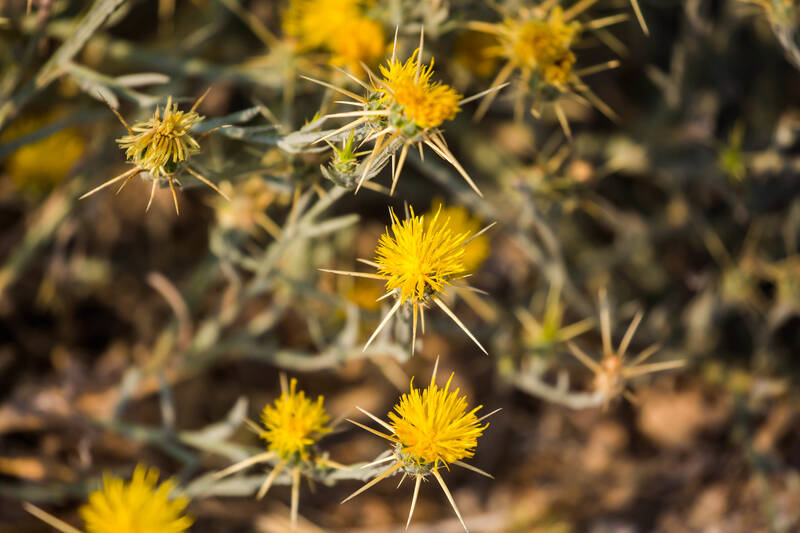
Yellow starthistle is a problematic weed characterized by its numerous rigid branches. This invasive plant can spread rapidly and establish dense stands, causing significant ecological and economic impacts.
One of the major concerns associated with yellow starthistle is its ability to deplete soil moisture, reducing water availability for desirable plants and impacting overall ecosystem health. This water depletion can also lead to reduced forage quality for livestock, posing economic challenges for farmers and ranchers.
Life cycle: Winter annual
Weed type: Broadleaf, Class B noxious weed
Where it thrives: Full sun and well-drained soils
How to identify yellow starthistle:
- Gray-green to blue-green leaves and stems
- Deep taproot
- Bright yellow flowers with sharp spines at the base
- Rigid stems in mature plants
How to get rid of yellow starthistle: For small infestations, hand-pulling or hoeing the plants is effective, ensuring the removal of as much of the taproot as possible. Tillage in early summer can also help disrupt the growth of this invasive weed. Regular monitoring and follow-up are necessary to address any re-growth or new seedlings.
In cases of larger infestations, herbicides can be used. Broadleaf post-emergent herbicides containing active ingredients such as glyphosate, imazapyr, and triclopyr can be sprayed in late fall or early spring when the plants are actively growing.
FAQ About Common Oregon Weeds
Noxious weeds refer to specific plants that have been officially identified by agricultural or governing authorities, such as the Oregon Department of Agriculture, as having the potential to cause harm to agricultural or horticultural crops, natural habitats, or ecosystems, as well as humans or livestock.
These weeds have been recognized as posing significant risks. They are considered harmful due to their detrimental effects on various aspects of our environment.
For small infestations, hand-pulling weeds by the roots can be an effective approach. Make sure to remove the entire plant, including the roots, to prevent regrowth. Pulling weeds when the soil is moist is advisable to facilitate easier removal.
For large infestations, herbicides may be advised. Broad-spectrum herbicides can effectively control a wide range of weed species, while selective herbicides target specific types of weeds. Read and follow all instructions on the herbicide labels carefully, and choose the appropriate herbicide based on the weed species you are targeting.
The Oregon coast is not immune to the presence of weeds, with several species commonly found in the region. Many of these weeds thrive in the moist soils characteristic of coastal areas. Here are some notable examples:
● Purple loosestrife
● Giant hogweed
● Garlic mustard
● Spotted knapweed
● Spurge laurel
● Himalayan blackberry
● English ivy
Bring in the Professionals
With a wide variety of species to deal with, weed identification can be a daunting task. Moreover, effective weed control becomes even more challenging when faced with widespread infestations. So why not call an Oregon lawn care pro near you? We have trusted professionals in Portland, Salem, Gresham, Hillsboro, and many more cities across the Beaver State.
Main Image Credit: Rawpixel